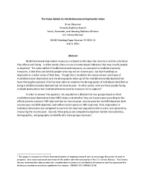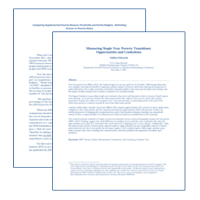
An official website of the United States government
Here’s how you know
Official websites use .gov
A .gov website belongs to an official government organization in the United States.
Secure .gov websites use HTTPS
A lock (
) or https:// means you’ve safely connected to the .gov website. Share sensitive information only on official, secure websites.
-
//
- Census.gov /
- Library /
- Census Working Papers /
- The Value Added of a Multidimensional Deprivation Index
The Value Added of a Multidimensional Deprivation Index
The Value Added of a Multidimensional Deprivation Index
Introduction
Multidimensional deprivation measures are based on the idea that income is not the only factor that affects well-being. In other words, there are non-income-based indicators that may classify people as deprived. The value-added of multidimensional measures, as compared to traditional poverty measures, is that they can identify people who may not be income poor, but face hardships or deprivations in other areas of their lives. Though this is implicit in the measurement and study of multidimensional deprivation and the demographic make-up of the multidimensionally deprived has been thoroughly explored, little has been done to examine the demographics of individuals identified as being multidimensionally deprived but not income poor. In other words, who are these people facing multiple deprivations that traditional income poverty measures fail to capture?
In order to answer this question, the population is divided into four groups based on their multidimensional deprivation Index (MDI) status and whether they are income poor according to the official poverty measure: MDI deprived but not income poor, income poor but not MDI deprived, both income poor and MDI deprived, and neither income poor nor MDI deprived. First, deprivation in individual dimensions are compared to examine the deprived population that is and is not captured by measuring the income poor. Second, these groups are compared using labor market characteristics, demographics, and geography to identify who these groups represent.
Share
Related Information
WORKING PAPER
Poverty Working PapersSome content on this site is available in several different electronic formats. Some of the files may require a plug-in or additional software to view.
 Yes
Yes
 No
NoComments or suggestions?


Top


